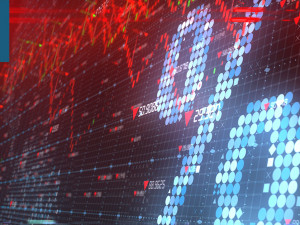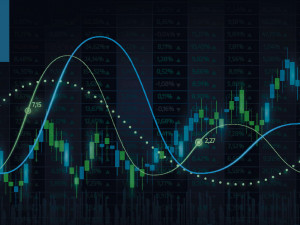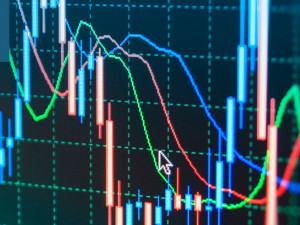
Mortgage budgets continue to rise
Morning mid-market rates – The majors
9th June: Highlights
- UK set for slowest growth in G20, except Russia
- Everything points to the economy treading water
- ECB begins the search for a neutral interest rate
GBP – Interest rate rises creating a hole in household spending
With inflation unlikely to begin to fall in the short term and the current cost of living crisis, households are being forced to cut back in several areas. The knock-on effect of this is a fall in levels of activity on the High Street, which, in turn, drives retail sales lower.
This then ripples through the economy and eventually contributes to a slowdown. The one difference from the current situation is that a slowing economy generally leads to a fall in inflation as activity drops but that is not the case currently, with several factors combining to push prices higher.
Energy remains the major contributor to inflation in the UK. The forecourt price of a litre of unleaded petrol is now approaching two pounds. This means that it now casts almost £100 to fill the tank of a regular family car.
When Chancellor of the Exchequer, Rishi Sunak, was pondering a windfall tax of energy companies recently, one of the main downsides of such a policy was economists’ belief that every tax eventually becomes a burden for the individual.
An addition to this belief is that any contraction in the economy always begins with the individual, and the effect of events on his/her ability to clothe themselves, feed themselves and keep themselves warm.
It is clear that as 2022 progresses, the winter will be a time of severe difficulty, especially since the price cap on energy is now certain to be raised again in the Autumn.
As the country waits for Sunak’s relief package to kick in, there are already calls being made for the Government to put in place additional support for early next year.
Putting Russia to one side, given the effect of sanctions on its economy, several economic think tanks are predicting that the UK will see the slowest growth in the G20 next year, when it will see no growth in output as the economy stagnates.
The Bank of England faces something of a race against time for its tightening of monetary policy to take place before it has to consider further support, most probably in the shape of a loosening of that same monetary policy.
Yesterday, the pound continued its recent trend of trading in a similar range. It fell from an opening level of 1.2590 to close at 1.2540 having traded down to 1.2504. That adds another day of training between 1.26 and 1.2450, the seventh in the sequence.
Considering your next transfer? Log in to compare live quotes today.
USD – Housing, activity, jobs, even inflation beginning to flatline
Since Jerome Powell has been straight forward about the fact that the Fed’s prime target now is to bring inflation back under control, there is none of the normal comment regarding the intrigue of an imminent FOMC meeting since just about every economist believes that he/she could write the press release that will follow next week’s meeting where interest rates will be raised by a further fifty-basis-points.
Weekly jobless claims data that will be released later today will be close to 200k, as they have remained recently.
The one note of excitement this week will be tomorrow’s release of inflation data.
It would take an extraordinary change in the level of inflation for it to have any effect on the FOMC, and contributing numbers have not indicated anything of the sort.
Inflation appears to have topped out, but is remaining stubbornly high as several contributing factors remain in place. The head of one of the major energy companies in the U.S. suggested to President Biden late last week that it was time to open the Spigot and flood the market with oil.
That was not very well received by the market, since it would have little effect on the wholesale price of oil, which is set in global markets.
Tomorrow’s data is expected to show a fall in headline inflation to 8.3% in May, unchanged from April, while ex-food and energy, it fell from 6.2% to 5.9%.
This will add to the feeling of the long wait until the markets return to something approaching normal.
Yesterday, the dollar index continued trading in an ever-narrowing range. Having opened at 102.35, it closed at 102.55 as it failed to show any discernible trend.
EUR – The time of if’s, but’s, and maybes has past
Today is the day that the ECB finally confirms the end of the low interest rate era, as its President confirms that interest rates will rise in the very near future. It may happen intra meeting, while an outside bet is for a hike to be announced today.
In a similar vein to the FOMC, the market believes that the Central Bank has become predictable since Christine Lagarde finally cast off the shackles of support for the Eurozone economy that had been her mantra as the economy emerged from the Pandemic.
Given the effect of the war between Russia and Ukraine as it now appears to have been labelled since Ukraine began to put up more of a fight than had been popularly expected, the Eurozone economy has taken as severe a hit as was created by the Pandemic. Energy remains the most common theme, with internal squabbling about the effect of sanctions on Russia and their possibly self-defeating outcome being top of the list.
It has taken an extreme effort from the more frugal nations of the Union, with Germany and Austria at their head, for The ECB to agree to first cut back the level of support it was offering to the market and then confirm the beginning of a tightening of monetary policy.
Now, all that remains to be agreed is the size of the first increment and the precedent it will set. It had been almost universally expected that the first rise in rates would be of twenty-five basis-points, but the hawks believe that starting slowly and building up, will allow inflation to take an even stronger hold and the hike wouldn’t even scratch the surface.
However, the doves fear that the jolt created by a fifty-basis point hike will be such that it could almost bring activity to a standstill.
Two issues that have been mentioned a few times recently will remain even after the hike is confirmed. The first is the fragmentation of interest rates across the Union, and the second is the size of the ECB’s balance sheet.
In common with the size of the hike, it is assumed that nothing will happen to physically cut the size of the balance sheet until 2023. However, were there to be a mention of such action in, possibly, Q4 it would see the euro grow wings.
Yesterday, the euro joined with the current sense of lethargy affecting traders.
It rose to a high of 1.0748 and closed just a few pips higher on the day at 1.0716 as today’s meeting was eagerly anticipated.

About Alan Hill
Alan has been involved in the FX market for more than 25 years and brings a wealth of experience to his content. His knowledge has been gained while trading through some of the most volatile periods of recent history. His commentary relies on an understanding of past events and how they will affect future market performance.”



